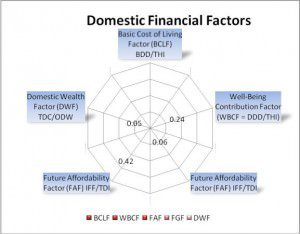Strategic variances can be divided into:
- Mutually exclusive – collectively exhaustive sets of variances which capture the separate impacts of key underlying causal factors, for example, deviations between actual and budgeted sales volumes and mixes, market sizes and shares, manufacturing costs, contribution margins.
- Discretionary costs. Conceptualizing mission in terms of profitability and a build, hold or harvest perspective and strategy in terms of low cost leadership or product differentiation.
By analysing the variances with explicit reference to a firm’s mission and business strategy, you can determine the extent to which deviations between actual and budgeted performance are or are not consistent with the mission and strategy and identify specific dimensions of performance which need improvement. Analysing the variances without reference to mission and strategy can be uninformative or misleading.
Strategic Planning: Performance Measurement Systems
Profit-linked models evaluate measures of return-on-investment and net income into:
- Productivity
- Price recovery
- Capacity utilization
- Other managerially relevant dimensions of performance.
Profit variances can be divided into:
- Effectiveness variances (market size, market share, selling prices, and product volume and mix variances)
- Efficiency variances (materials and labour price and efficiency, discretionary and committed cost spending variances, and/or activity-based cost variances).
Effectiveness variances are of particular importance to business units pursuing differentiation strategies and efficiency variances to units pursuing low cost, high volume strategies.
 Strategic Planning: Theoretical and Empirical Relationships
Strategic Planning: Theoretical and Empirical Relationships
In Porter’s framework, to achieve a competitive advantage, a firm must devise a strategy to defend against, or take advantage of, the structural determinants of the nature and intensity of competition. The levels and time-paths of the ratios reflect outcomes of managers’ efforts to exploit sources of bargaining power over consumers and suppliers and to reduce threats from new entrants and substitutes, as well as the intensity of competition.
Emphases on improvements in productivity and capacity utilization, shifts in product mix toward products with lower unit costs, and low price recovery are consistent with low cost strategies.
Less emphasis on productivity and capacity utilisation, changes in product mix which may be more costly but serve less price sensitive consumers, and higher price recovery are consistent with differentiation. These relationships are fairly general and should hold for any industry or SBU.
Operating choice variables of structural and exceptional cost and revenue drivers and their relationships to the ratios are conceptually similar across industries but often industry-specific in terms of measurement. Within industries, the design of each SBU’s products differs depending upon the SBU’s particular customer and market orientation and the configuration as well as characteristics of each SBU’s operations.